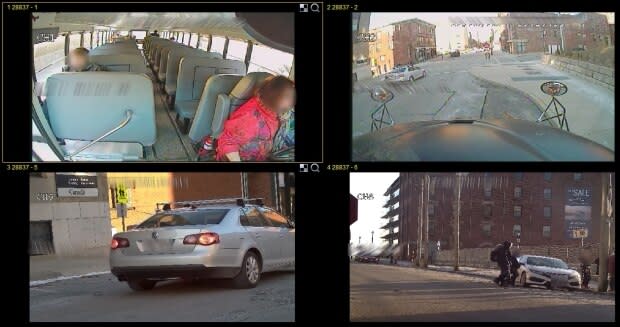Saint John police to crack down on distracted driving
Saint John police say they're seeing more drivers texting and driving and they are about to bring in a zero-tolerance policy.
The force launched an awareness campaign Monday.
"The Saint John Police Force doesn't wish to hand out fines," said Jim Hennessy, manager of communications and public information.
"We hope to educate and remind drivers that operating a motor vehicle and using a phone don't go together."
So far in 2020, Saint John police have issued 47 tickets for distracted driving, said Hennessy.
That's after 73 tickets were issued last year.
The New Brunswick RCMP report that in the areas they patrol 686 distracted driving tickets were handed out in 2017, 622 in 2018 and 506 in 2019.
Figures were not available for the number of accidents in which cell phone use was a factor.
While the ticket numbers don't seem to reflect an increase, the problem is getting worse, Hennessy assured.
"While on patrol, officers with the SJPF see a growing number of motorists that are using their cell phones when operating their motor vehicle," he said.
"Whether that is texting, talking, sending or browsing emails … it is a growing problem."
School bus driver Lisa McFarland agreed.
McFarland has been driving a school bus in the Saint John area for 20 years.
"Every day we're experiencing more and more people going through our red lights," McFarland said.
She has no doubt it's because people are using cell phones while driving.
"We can see them, we're up high and you can see their heads are down, they're looking down, they're not even looking at you and they go straight through the lights."

McFarland said bus drivers and students are taking every possible precaution.
Bus drivers do annual training at schools, she said, instructing students to wait until the red lights of the bus are flashing, its mechanical arms are extended and the bus driver has made eye contact with them.
But often an oncoming vehicle will arrive suddenly, said McFarland, after the bus driver has indicated to a student it's safe to cross.
"We lay on the horn and hope the student jumps back," she said.
The school bus driver also takes note of the licence plate number, if they can catch it.
This is more difficult now, McFarland said, because the provincial government no longer requires that vehicles have front licence plates.
However, newer buses are equipped with cameras that can record a vehicle speeding by with the touch of a button.
It's a great system, she said. The only problem is it's not available in older buses.
Video evidence is forwarded to transportation officials and police.
The fine for passing a school bus with its red lights flashing is $480.
McFarland said drivers will claim afterwards that they didn't see the bus. To her that goes to show how distracting phones are.
"They didn't see a 13 metric tonne yellow bus with all our warning systems on."
She thinks drivers are kidding themselves if they think they can use their phones safely while operating a vehicle.
"It is extremely dangerous."
Hennessy pointed to statistics from the Insurance Bureau of Canada that back up McFarland's observation.
"You are 23 times more likely to be in a motor vehicle accident if you text while driving," he said.
According to the provincial government's website "driver distraction is a factor in 8 out of 10 – about 4 million – car crashes in each year."

